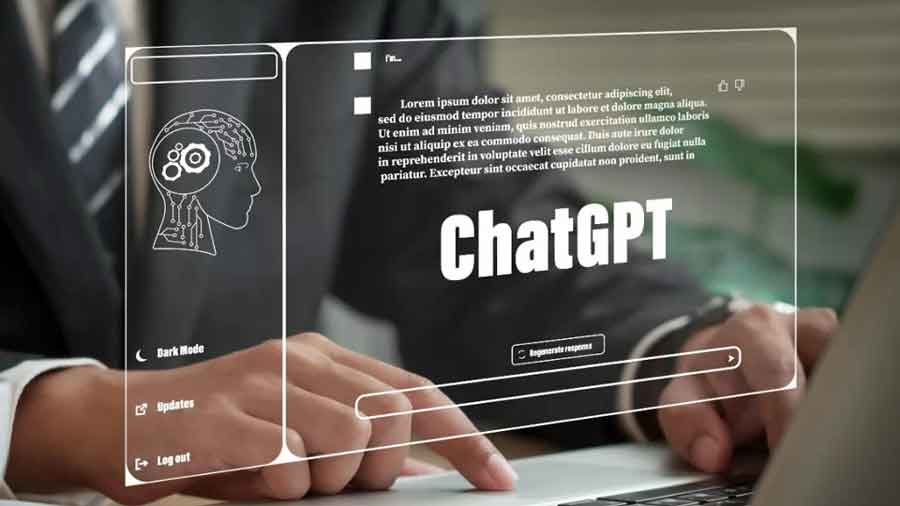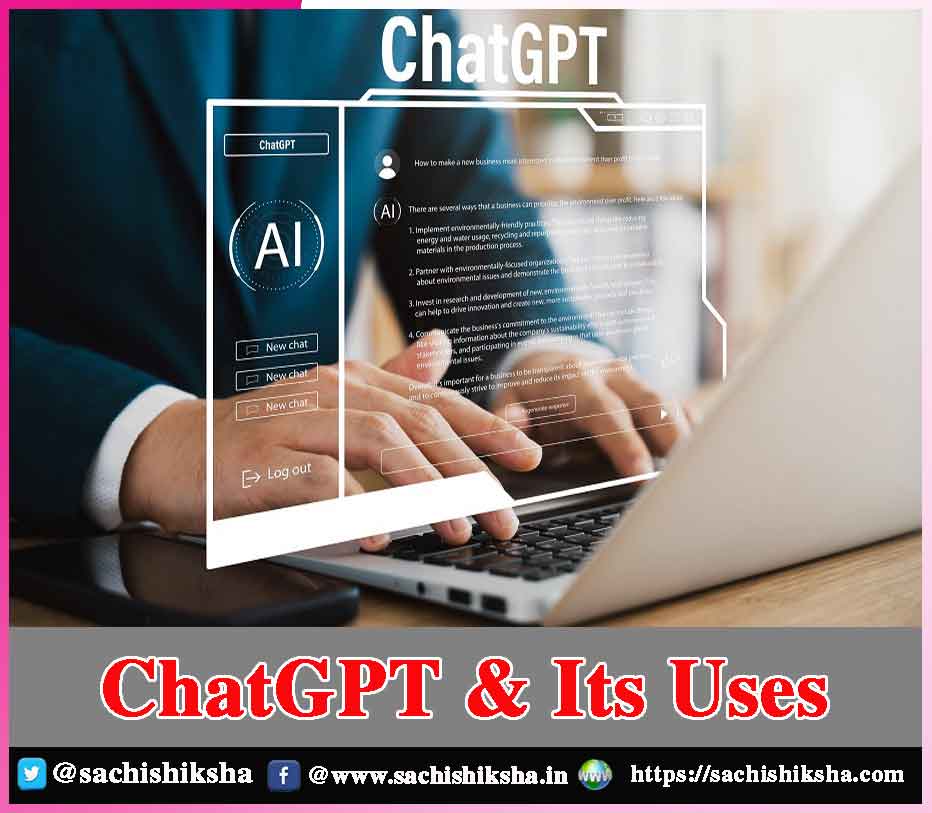ChatGPT & Its Uses
Introduction: ChatGPT is an AI (Artificial Intelligence) programme that receives human prompts and generates human-like answers. This is not like anything we’ve seen previously.
Also Read:
- Machine And Technology- Paper Bridge and Glass of Water
- Rahul Bajaj: Master of the Rough Road
- National Science Day
- View From India: Human-centric Approach to Technology
Table of Contents
Natural Language Processing Tasks:

It was developed on a vast database of internet content and can perform a variety of natural language processing tasks, including translating languages, summarization of text, creation of texts, and conversation technologies.
Development of ChatGPT:
ChatGPT was developed by OpenAI, a 2015 research into artificial intelligence (AI) organization. The purpose of OpenAI is to create and encourage AI in a secure and beneficial manner for mankind. ChatGPT was created through a partnership between OpenAI’s scientists and technologists to produce a model of language capable of participating in real conversations with people.
ChatGPT is built on the GPT-3.5 architecture, which is a continuation of OpenAI’s past work on models of languages and is considered a big step forward in AI. The ChatGPT is always improving as a result of continuing training and tuning.
Fantastic AI & Machine Learning Invention:
ChatGPT is a fantastic AI and machine learning invention. Particularly, the transformation structure that powers the AI chatbots has taken generations of tedious work. It has its foundation on the GPT-3.5 model, but has been adjusted for responding effectively to talks. It understands language that is natural and responds accordingly.
When requested, ChatGPT may produce written content, email messages, and imaginative materials such as poems and programmes, as well as explanations of any significant events in history. Yet, it must remind of the fact that any Large Language Model (LLM) is only as effective as the information set on which it was trained. As a result, it is not possible to assume that the answer will not be biased in one direction or the other, particularly on key matters such as ethnic background, sexual orientation, and political developments.
Refined Version of GPT-3.5:
ChatGPT is a refined version of GPT-3.5, a language system learned to generate text. ChatGPT was optimized for conversation using Reinforcement Learning with Human Feedback (RLHF), an approach that guides the model towards desired behaviour using human examples.
The ChatGPT training data is a vast database of online text termed as the Web Text dataset. The data set contains a diverse mix of text kinds and styles, including papers, discussions, and social networking posts. ChatGPT has the ability to produce language that is akin to how humans write by utilizing such a broad collection.
Most Sophisticated Model of Language:
ChatGPT is a significant advancement in the fields of artificial intelligence and the processing of natural languages. It is one of the most sophisticated models of language currently available due to its capacity to decode and react to natural language in a conversation fashion.
ChatGPT’s material so resembles that it is frequently difficult to tell apart from human-written language. This has resulted in a variety of applications, including chatbots, customer support, translation of languages, and others. In addition, the creation of ChatGPT has revolutionized the field of artificial intelligence and the processing of natural languages, opening the path for even more powerful computational models of language in future generations.
Accessible Through Varied Networks:
ChatGPT is accessible through a variety of networks that have incorporated it into their systems, including AI chatbots channels, messaging applications, and AI assistants. However, everyone is unable to use ChatGPT. OpenAI, the company behind ChatGPT, provides access to its model of language via a paid membership API service to companies and programmers.
Developers can use this API to incorporate the syntax model into their own apps and services. Using the API, on the other hand, necessitates coding and processing of natural language’s knowledge. ChatGPT is generally used in applications involving processing of natural languages and human-like communication. Because of its capacity to produce human-like language, ChatGPT has become a popular choice for creating AI chatbots and AI virtual assistants that can speak with customers and users.
Not Suitable in Every Case:
ChatGPT is used by some firms for automated customer care and assistance, while others use it for translating languages and content development. ChatGPT has also been employed in the processing of natural languages development and research, in addition to in the development of compelling chat experiences for educational and recreational purposes. It is important to remember, however, that ChatGPT remains a machine training model, and its conclusions are not always precise or suitable in every case.
Uses of ChatGPT For Organizations:
- Organizations may produce fascinating and relevant material to appeal to their intended audience by utilizing ChatGPT’s GPT-3 technology and the processing of natural language.
- Companies can utilize ChatGPT to create content that is tailored to their target audience’s specific needs and interests, boosting the probability that it will grab their attention and spark their curiosity.
- ChatGPT can also help with content analysis and curating from a variety of sources of information, assisting businesses in building a consistent and efficient content advertising plan.
- Content producers must understand how ChatGPT may aid in the generation and curating of content. ChatGPT’s processing of natural languages and GPT-3 technologies enable it to generate engaging and relevant content based on the user’s input and interests.
Uses of ChatGPT in Medical Field:
- ChatGPT uses history of relatives, symptoms, and test findings to summarize medical information. The system successfully translates English texts. As a result, we may anticipate it doing well with medical records.
- Writing generic texts, such as messages, book blurbs, and anything other than save your time and can be subsequently customized to match your needs and represent your distinct style. It may compose excellent emails on a variety of topics and will aid in general communication with clients.
- Answer to general inquiries. ChatGPT delivers broad, universal solutions in numerous areas. The questions one asks will be generally replied, and the basic information will be correct. The algorithm explains what a synthetic pancreas is and the way it works, but it cannot provide expert guidance. In a comparable manner, it gives a great overview of the goal of a favorite board game. Nonetheless, it cannot provide a simple yes or no answer to a clear but unusual gaming situation.
Concerns About Security and Confidentiality:
This is a benefit rather than an obstacle. ChatGPT has been designed to avoid unnecessary or poisonous reactions. So, until a mistake occurs, we won’t find any racial remarks, jargon, or anything else.
ChatGPT has been taught on a large amount of data; however it fails to fully understand and utilize that knowledge. Consider it like a bird reiterating what it has observed. While ChatGPT performs an excellent job with this data, it suffers with completely novel and unconventional difficulties. This causes ChatGPT to experience difficulties occasionally and offer erroneous or, in some circumstances, grossly incorrect responses.














































